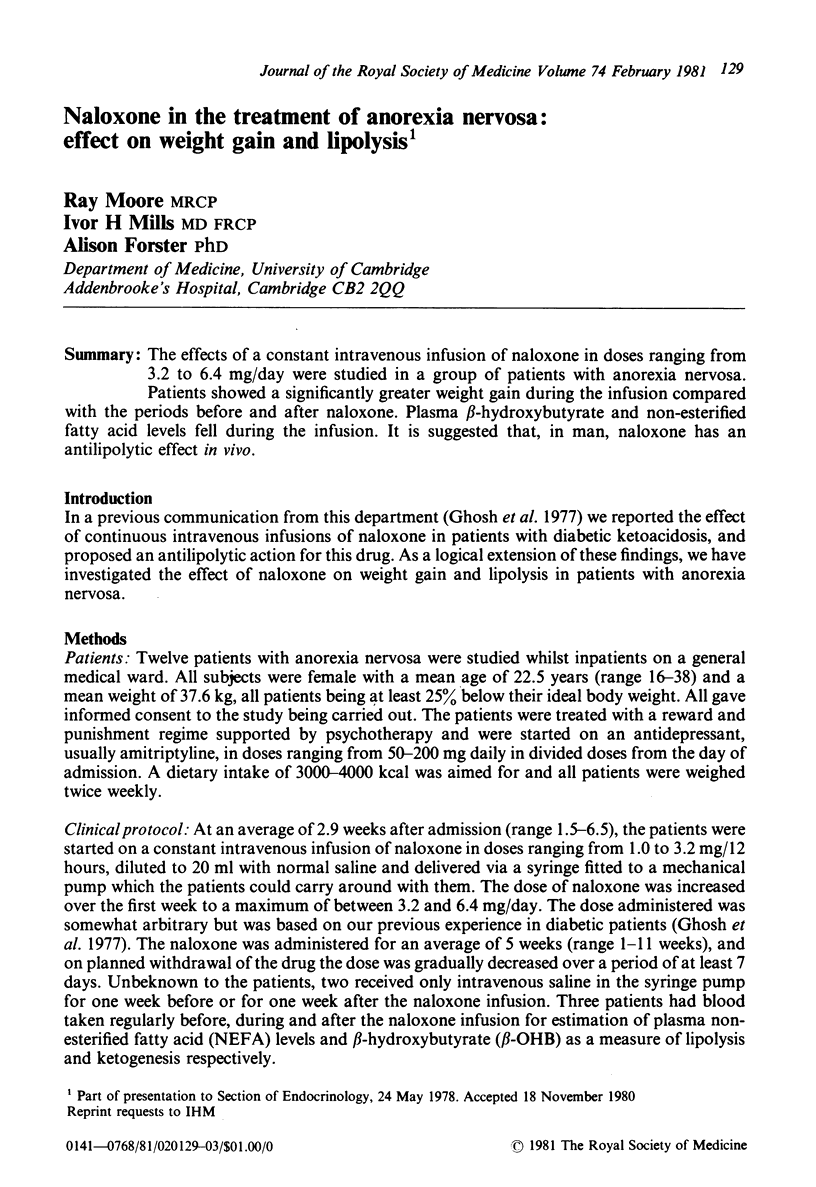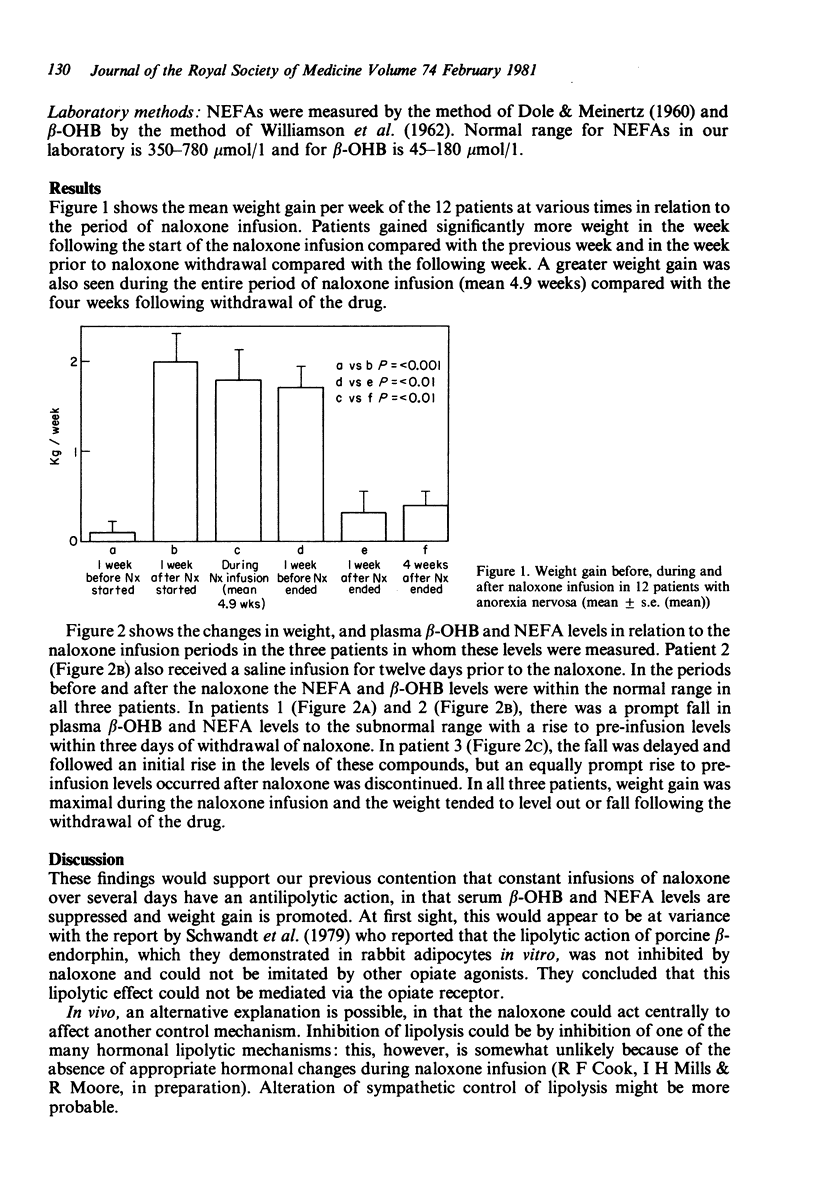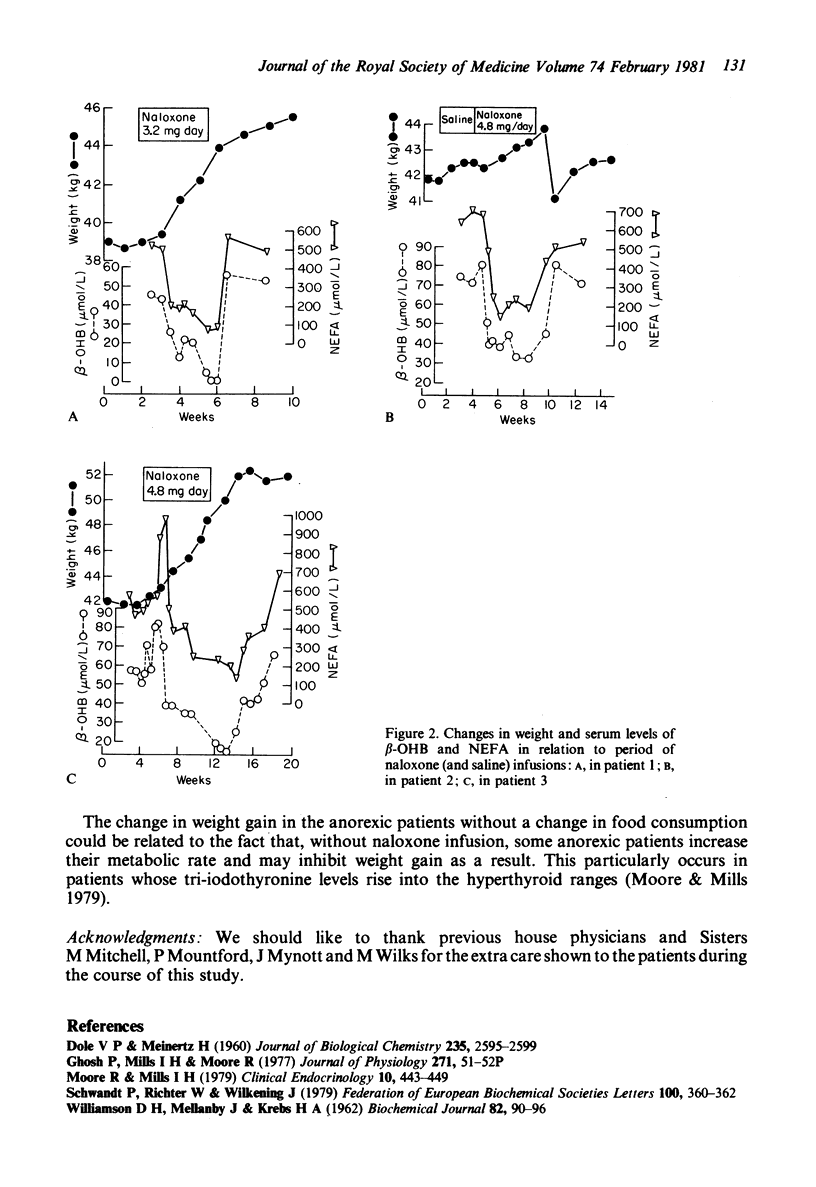Abstract
The effects of a constant intravenous infusion of naloxone in doses ranging from 3.2 to 6.4 mg/day were studied in a group of patients with anorexia nervosa. Patients showed a significantly greater weight gain during the infusion compared with the periods before and after naloxone. Plasma β-hydroxybutyrate and non-esterified fatty acid levels fell during the infusion. It is suggested that, in man, naloxone has an antilipolytic effect in vivo.
Full text
PDF


Selected References
These references are in PubMed. This may not be the complete list of references from this article.
- DOLE V. P., MEINERTZ H. Microdetermination of long-chain fatty acids in plasma and tissues. J Biol Chem. 1960 Sep;235:2595–2599. [PubMed] [Google Scholar]
- Ghosh P., Mills I. H., Moore R. The anti-ketotic effect of opiate receptor blockade by naloxone infusion in human diabetes [proceedings]. J Physiol. 1977 Oct;271(2):51P–52P. [PubMed] [Google Scholar]
- Moore R., Mills I. H. Serum T3 and T4 levels in patients with anorexia nervosa showing transient hyperthyroidism during weight gain. Clin Endocrinol (Oxf) 1979 May;10(5):443–449. doi: 10.1111/j.1365-2265.1979.tb02100.x. [DOI] [PubMed] [Google Scholar]
- Schwandt P., Richter W., Wilkening J. In vitro lipolytic activity of porcine beta-endorphin not mediated by an opiate receptor. FEBS Lett. 1979 Apr 15;100(2):360–362. doi: 10.1016/0014-5793(79)80369-5. [DOI] [PubMed] [Google Scholar]
- WILLIAMSON D. H., MELLANBY J., KREBS H. A. Enzymic determination of D(-)-beta-hydroxybutyric acid and acetoacetic acid in blood. Biochem J. 1962 Jan;82:90–96. doi: 10.1042/bj0820090. [DOI] [PMC free article] [PubMed] [Google Scholar]


